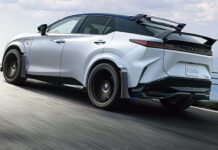
As the world grapples with the challenges of climate change and environmental degradation, the need for sustainable transportation has never been more urgent. Electric mobility emerges as a powerful solution, offering cleaner, greener alternatives to conventional fuel-driven vehicles. In this context, Nishchal Chaudhary, Founder of BattRE Electric Mobility, shares insights on how electric vehicles (EVs) can address pressing environmental issues while driving us toward a more sustainable and eco-friendly future.
In our relentless pursuit of progress, addressing environmental degradation and climate change has become imperative. As we envision a sustainable future, the adoption of electric mobility, particularly two-wheeler electric vehicles (EVs), emerges as a crucial solution. With its rapidly expanding population and accelerating urbanization, India stands at the forefront of this transformative shift. By embracing electric mobility, the nation can confront environmental challenges directly, fostering a cleaner and greener future.
India’s environmental challenges are pressing and demand immediate action. As one of the world’s fastest-growing economies, the country faces severe air pollution, largely driven by vehicular emissions. According to the World Air Quality Report, 22 of the world’s 30 most polluted cities are in India. This stark reality highlights the urgent need for sustainable transportation alternatives to reduce pollution and enhance air quality.
Two-wheeler EVs offer a promising solution. Powered by electricity instead of fossil fuels, these vehicles provide an environmentally friendly mode of transportation. Unlike traditional motorcycles and scooters that emit harmful pollutants, electric two-wheelers produce zero tailpipe emissions. Transitioning to electric mobility can significantly reduce air pollution, curb greenhouse gas emissions, and contribute to a healthier environment.
By adopting two-wheeler EVs, India can lead the charge toward a sustainable future while addressing its environmental challenges head-on. This shift represents not just technological progress but a crucial step toward ensuring cleaner air and a healthier planet for future generations.
To address the challenges of promoting electric mobility, we must overcome several barriers. Firstly, the limited availability of charging infrastructure poses a challenge to the widespread adoption of two-wheeler EVs. The establishment of a robust charging network, including both home-based and public charging stations, is crucial to instil confidence in potential electric vehicle owners. Collaborative efforts between the government, private sector, and utility companies are essential to ensure adequate charging infrastructure across cities and towns.
Additionally, the initial cost of electric two-wheelers remains a concern for many consumers. However, it’s important to consider the long-term benefits and cost savings associated with these vehicles. Electric two-wheelers have significantly lower operational costs compared to conventional counterparts, thanks to the reduced cost of electricity and lower maintenance requirements. According to a study by the International Council on Clean Transportation, the total cost of ownership for electric two-wheelers can be up to 30% lower compared to internal combustion engine vehicles. This cost advantage, coupled with the potential for future advancements in battery technology, makes electric two-wheelers an attractive and sustainable choice.
To foster the adoption of electric mobility, the Indian government has implemented several initiatives. PM E drive scheme provides incentives and subsidies for the purchase of electric two-wheelers. These incentives aim to bridge the cost gap and make electric vehicles more affordable for consumers. Furthermore, the government has set ambitious targets for electric vehicle adoption and is actively promoting research and development in the electric mobility sector.
Collaboration between stakeholders is crucial to accelerate the transition to electric mobility. Manufacturers, utility companies, policymakers, and consumers must work together to create an ecosystem that supports and encourages the widespread use of electric two-wheelers. This includes developing innovative financing options, increasing awareness about the benefits of electric mobility, and addressing any infrastructure gaps that may hinder adoption.
As we envision a sustainable future, the transformation of India’s urban mobility through two-wheeler EVs is a significant step forward. By reducing air pollution, mitigating climate change, and conserving natural resources, electric mobility offers a compelling solution to the environmental challenges we face. The collective efforts of individuals, businesses, and policymakers can propel us towards a greener tomorrow. Let us embrace the potential of electric two-wheelers and steer our nation towards a sustainable and cleaner future.









